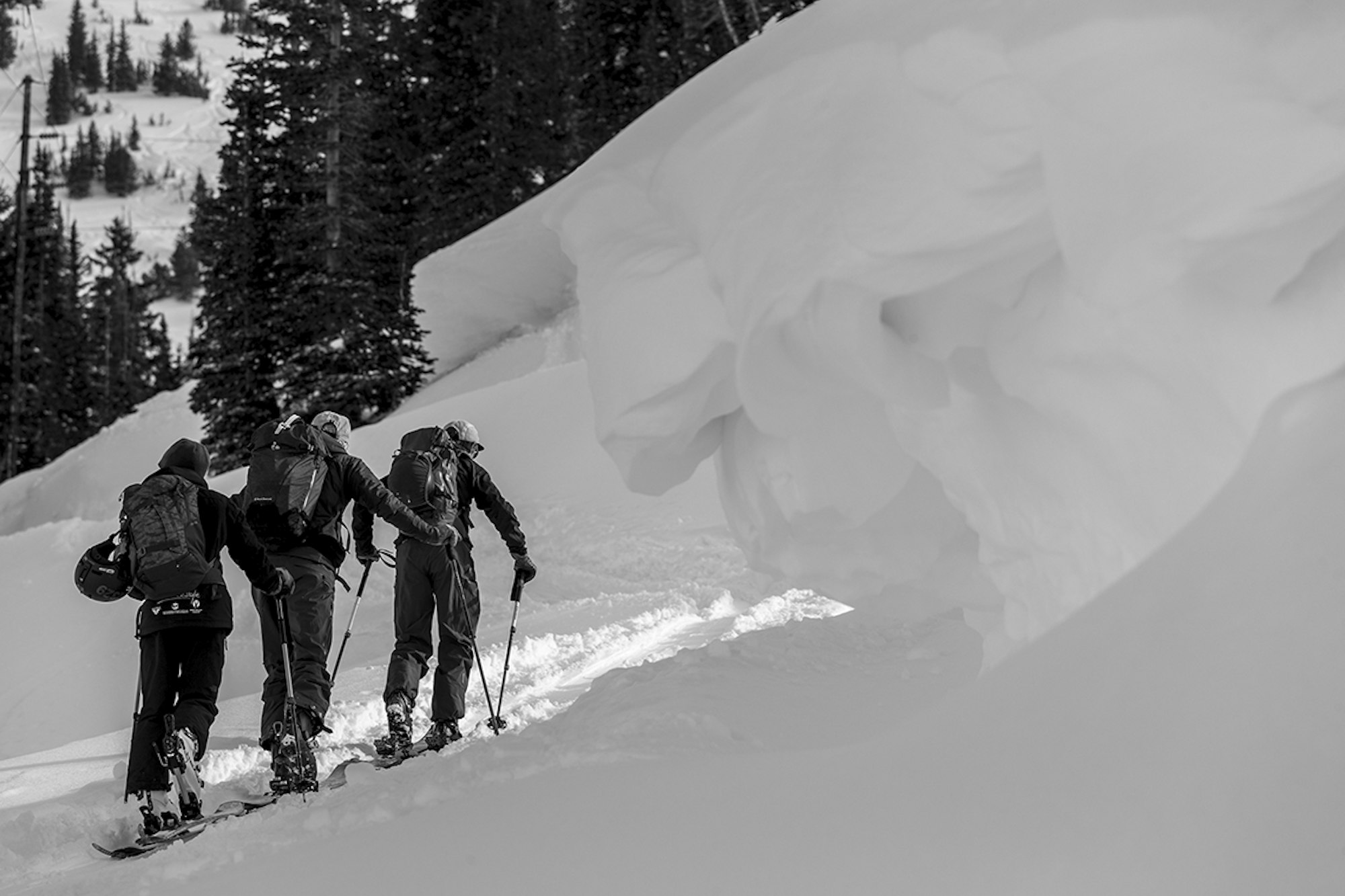Utah Avalanche Center Launches New Youth Program
WORDS • ERME CATINO | PHOTOS • SAM WATSON
It’s a sunny and cool morning in the Wasatch, with fifteen inches of snow blanketing the low hanging backcountry fruit across the street from Alta and Snowbird. The canyon begins to hum as our group departs from Our Lady of Snows—a church of powder of sorts, with an auxiliary use for community events. We just finished our morning weather briefing during the Utah Avalanche Center’s first-ever Youth Backcountry 101 Avalanche Course and had begun walking to the trailhead—chatting about high school, sports, favorite places to shred and, of course, avalanche education.
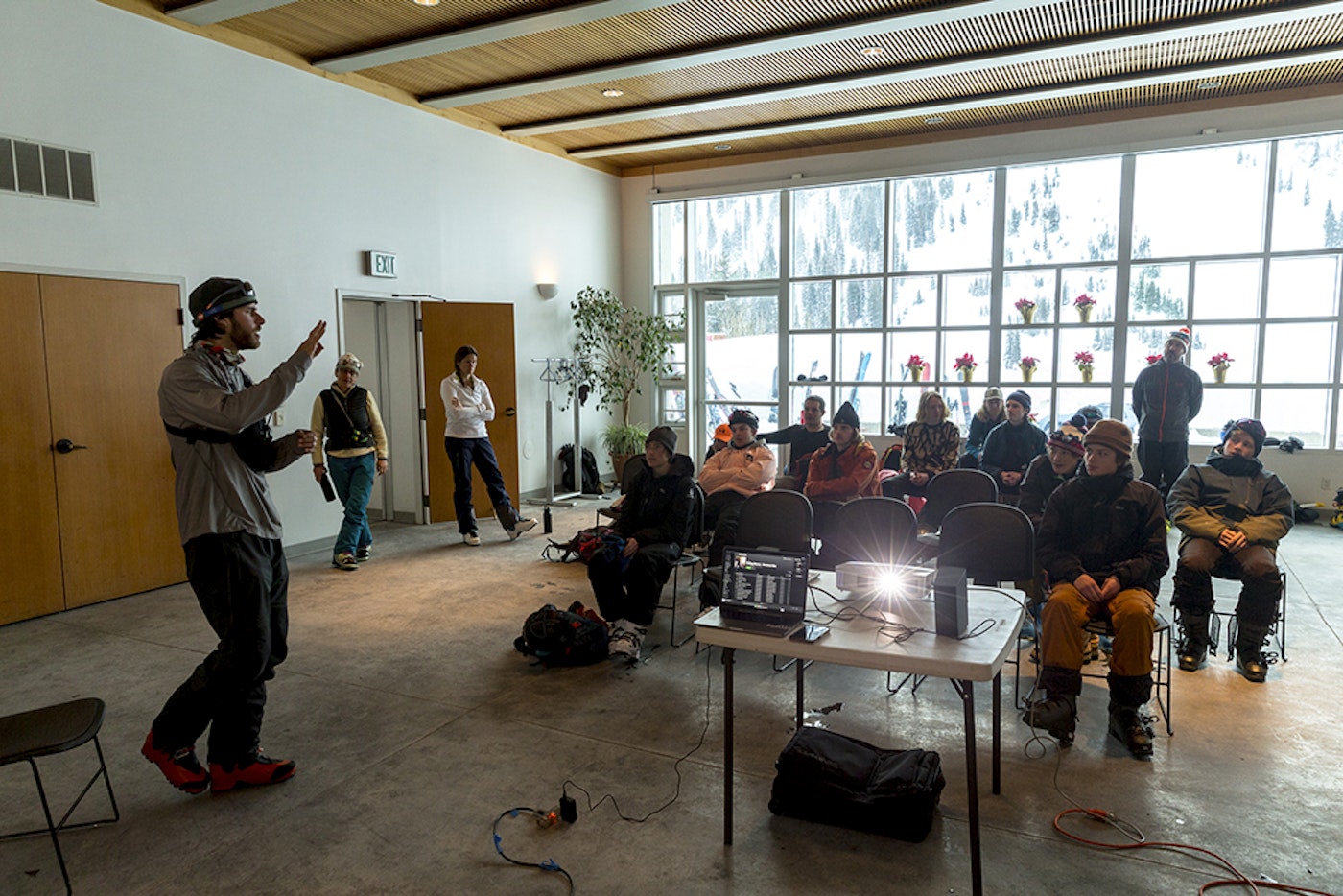
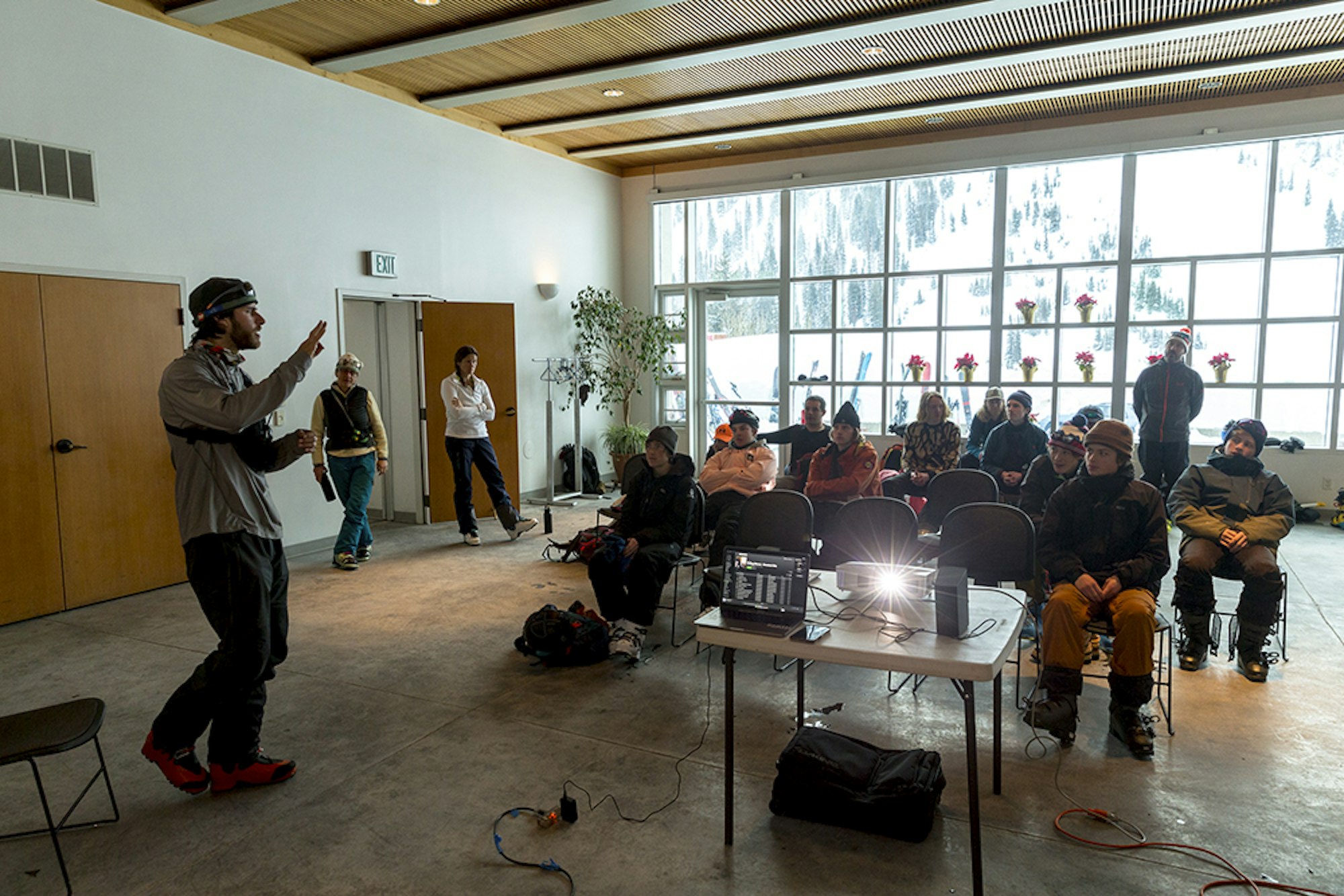
Reviewing the avalanche forecast with instructor Andy.
Over the past few years, interest in backcountry skiing has grown exponentially. No doubt the combination of increased traffic and expenses at resorts, continued improvements in backcountry gear and the ever-present lure of untracked powder. Furthermore, ski media is riding the wave of popularity and is highlighting backcountry skiing and travel to remote locations more than ever. This rise in popularity is exposing the younger generation to the backcountry at an earlier age. It’s akin to the popularity of the new school movement back in the early ’00s in which kids began hitting parks and urban, only now the youth are looking for steep powder, cliffs and pillows.
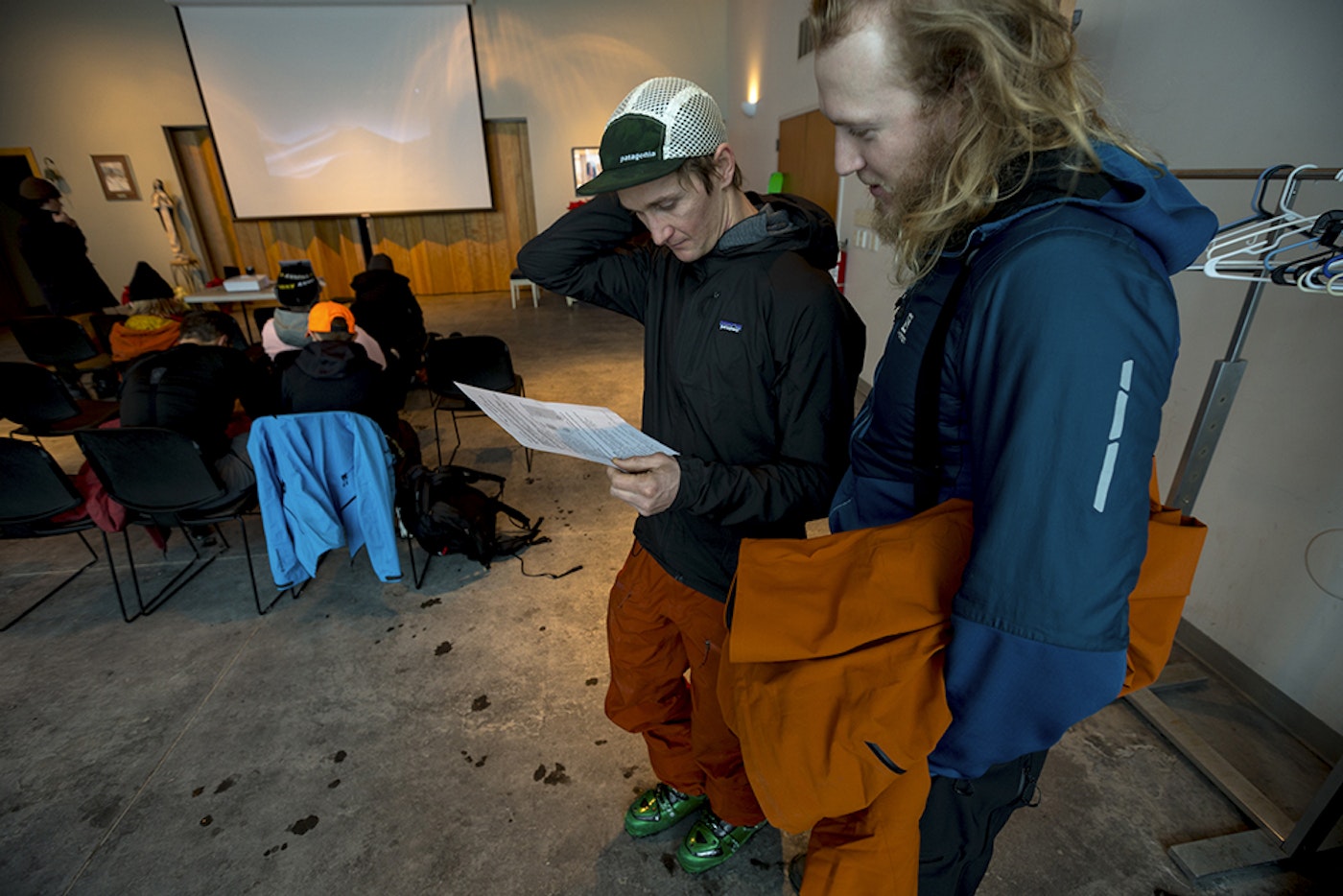
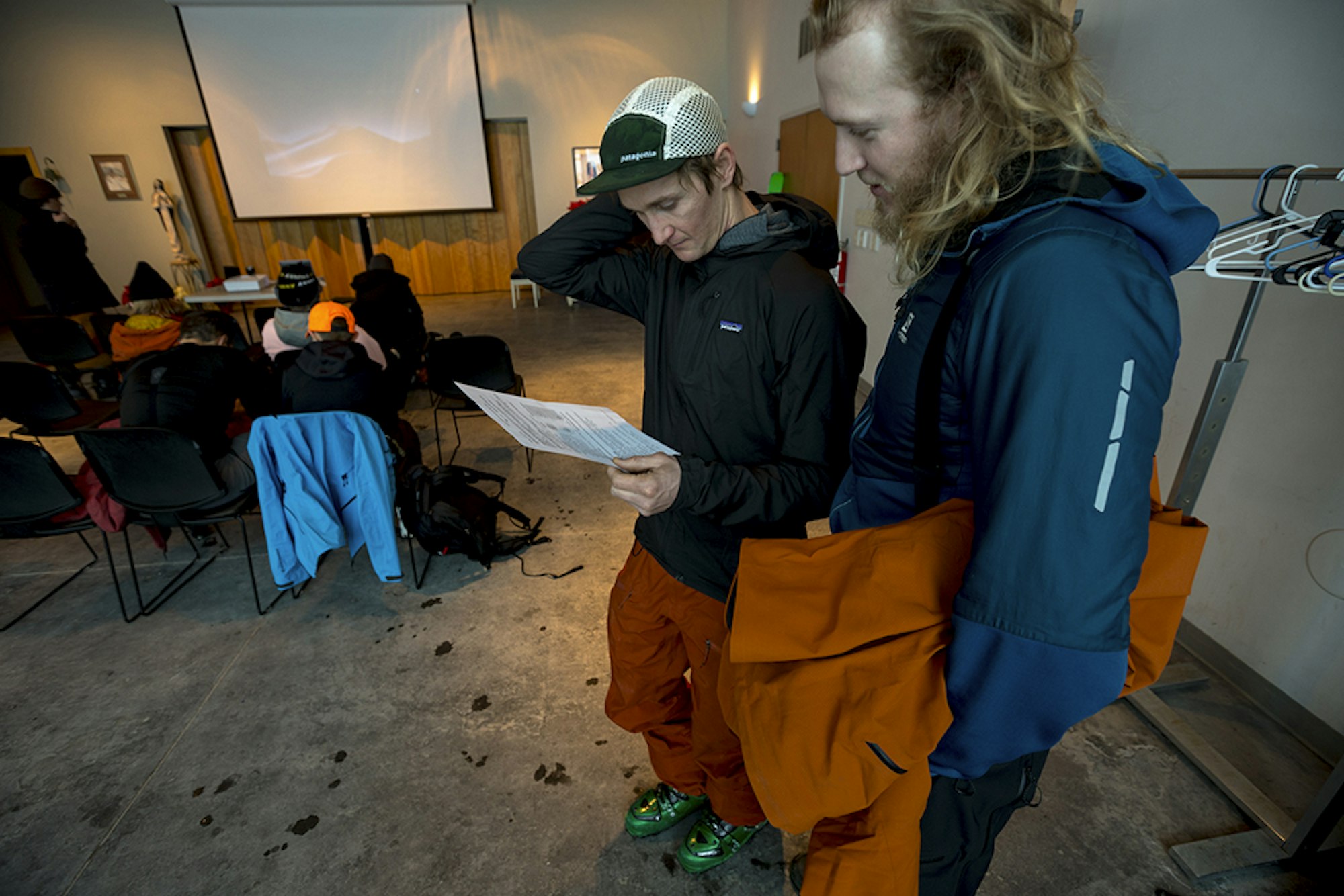
Carston Oliver and Drew Petersen reviewing information at the youth avalanche education course.
This was the premise for an idea last spring. A friend of mine in Canada was running a similar youth program out of Revelstoke Mountain Resort, and I knew that I could do the same around the Wasatch. Opening the door for youth backcountry education and providing it in a manner that is relatable. So rather than host a full Level 1 Avalanche Course with a barrage of information—that they might not be ready for—the idea was to create a youth class for kids ages 13 to 18, basing it around the introductory 101 courses and include a handful of pro-skiers to give the class and education a fresh take.
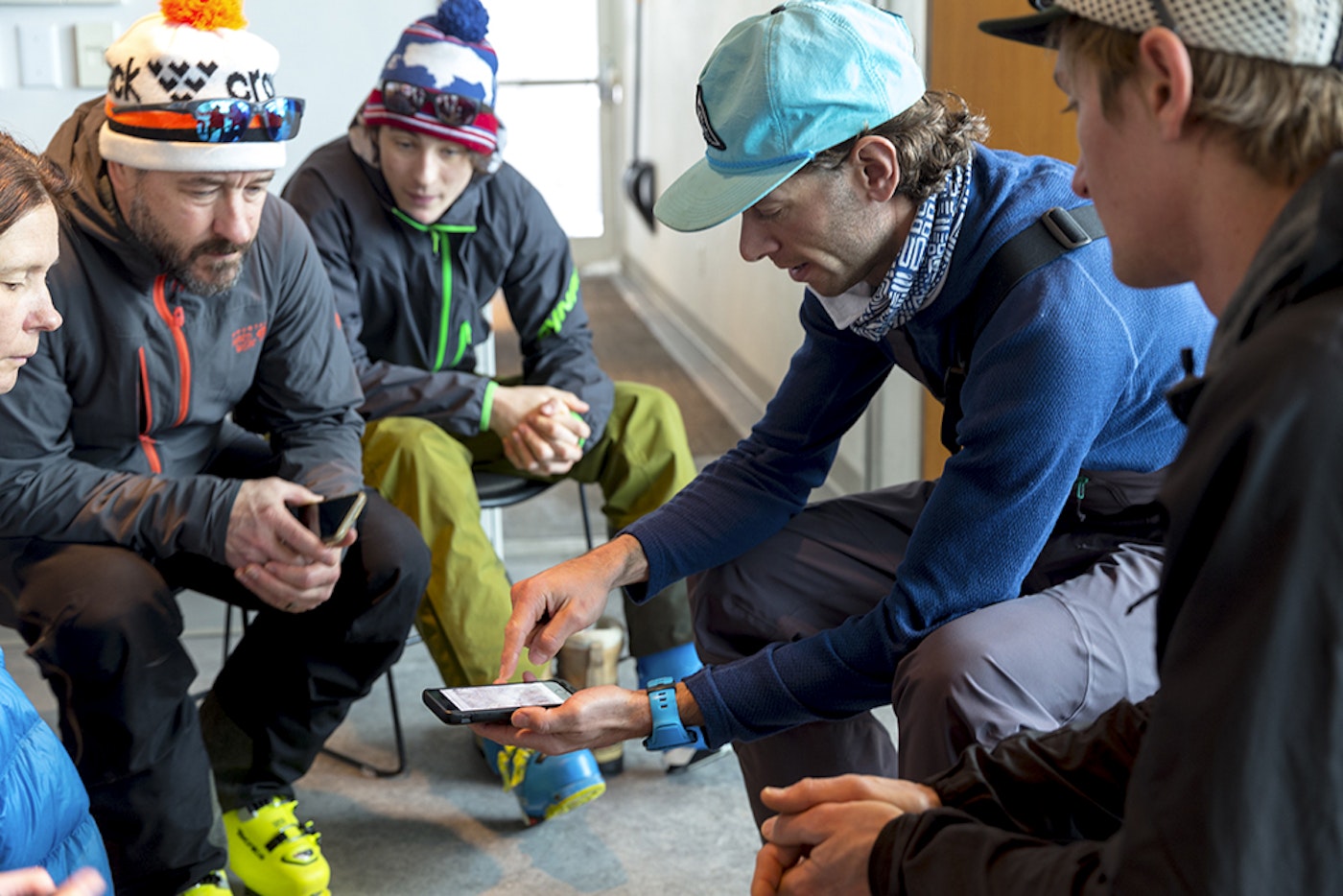
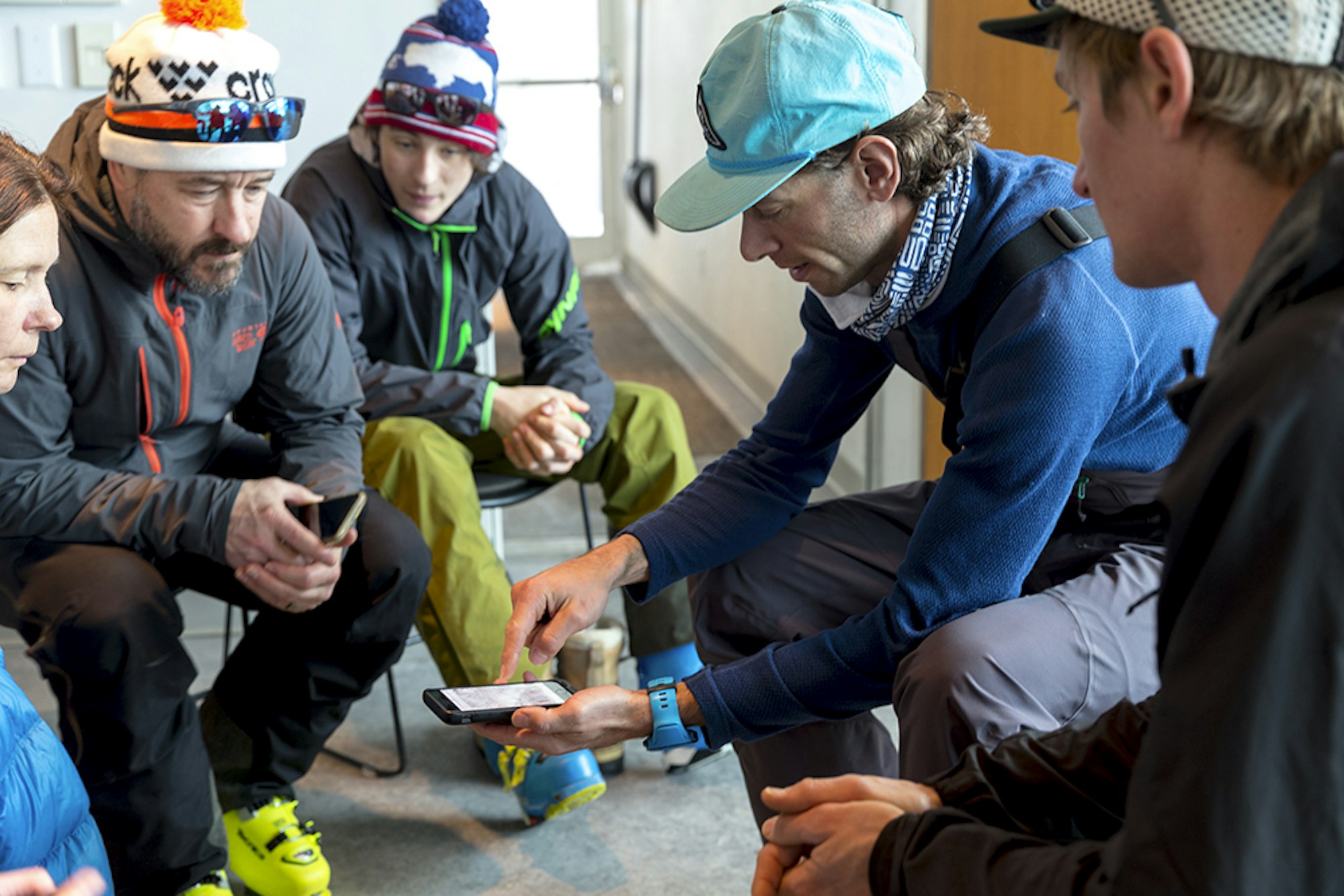
Making a plan with instructors Erme Catino and Carston Oliver.
“Backcountry usage has exploded in recent years,” explains Bo Torrey, program director for the Utah Avalanche Center. “We’ve seen a steady increase in our course enrollment numbers since 2015. Our education program has continued to expand and we’re always looking for new and innovative ways to connect with emerging user groups.” Torrey was integral in helping me get the program off the ground. We eventually launched it on the website and within a couple of weeks, and with no real advertising push, the class filled up. We were psyched, there clearly was a need for kids to begin learning about snow, avalanches and where they can safely backcountry ski.
Earlier in the week, our crew of kids hunkered down in a conference room as Andy Nassetta, from the Utah Avalanche Center, and I presented the standard 101 curricula. Already engaged, the room lit up when Patagonia athlete Carston Oliver began to go through his slides regarding a close call in Alaska. Oliver’s presentation was then followed by a short slideshow and discussion from Salomon athlete Drew Petersen—who highlighted that not long ago he was in their shoes, only this time they (the students) have the opportunity to learn through this class and not through a few bad luck accidents. The evening was capped off by a question and answer session with Oliver, Petersen and Black Diamond athlete Mary McIntyre. The kids were engaged, and I could tell we were in for an awesome field day on Saturday.
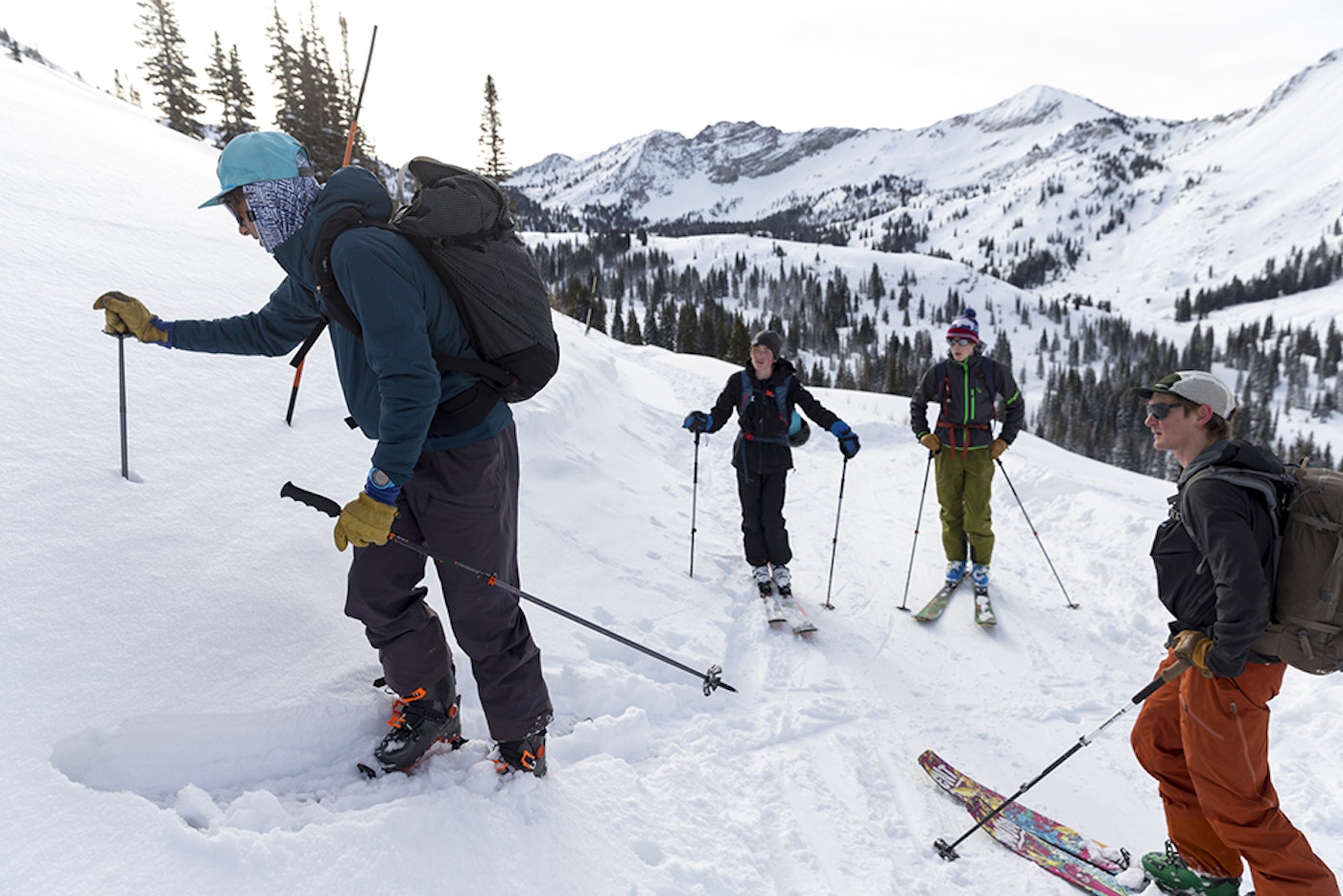
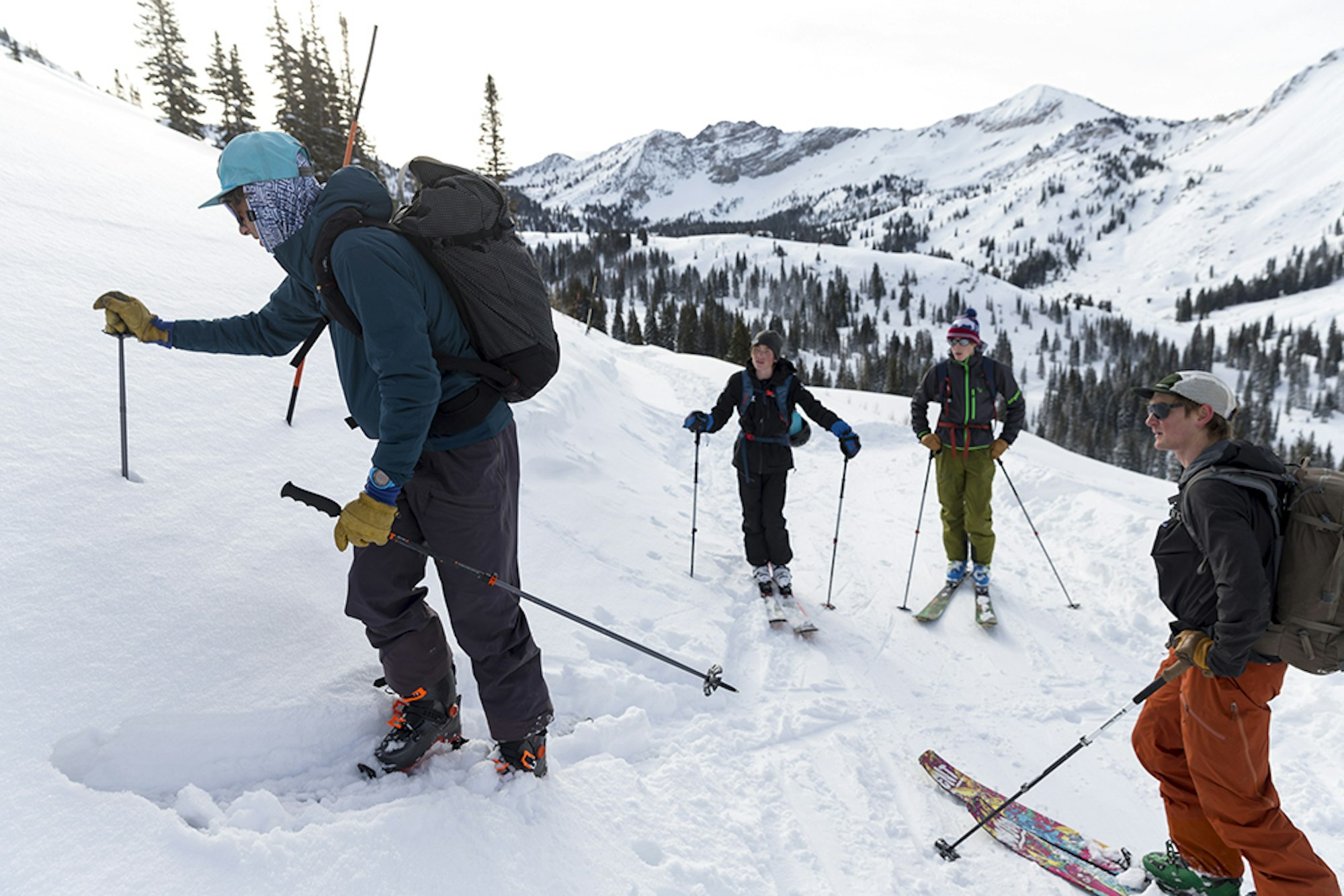
Erme Catino checking for weak layers in the snowpack.
Skinning up Grizzly Gulch that morning, our small group was able to observe other skiers while going over obvious clues, terrain management and travel. Like sponges, they absorbed everything and were already making noteworthy observations—like when one group of skiers stopped mid-slope as others in their party descended on top of them. We practiced with our rescue gear, showed them the tools and techniques to practice, and then climbed up to the ridge to discuss a snow pit and stability tests, and what it means when they read about them in the avalanche forecast.
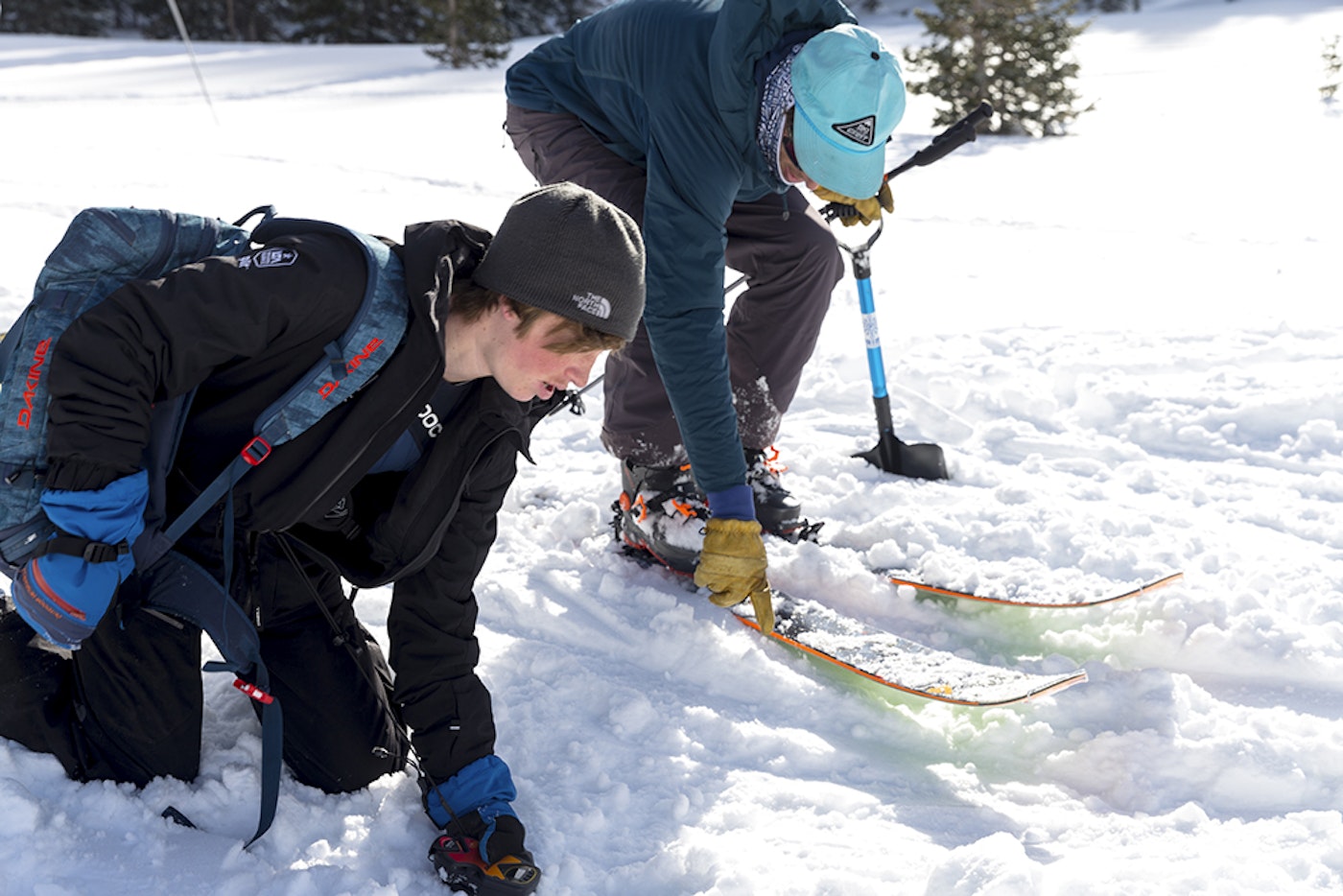
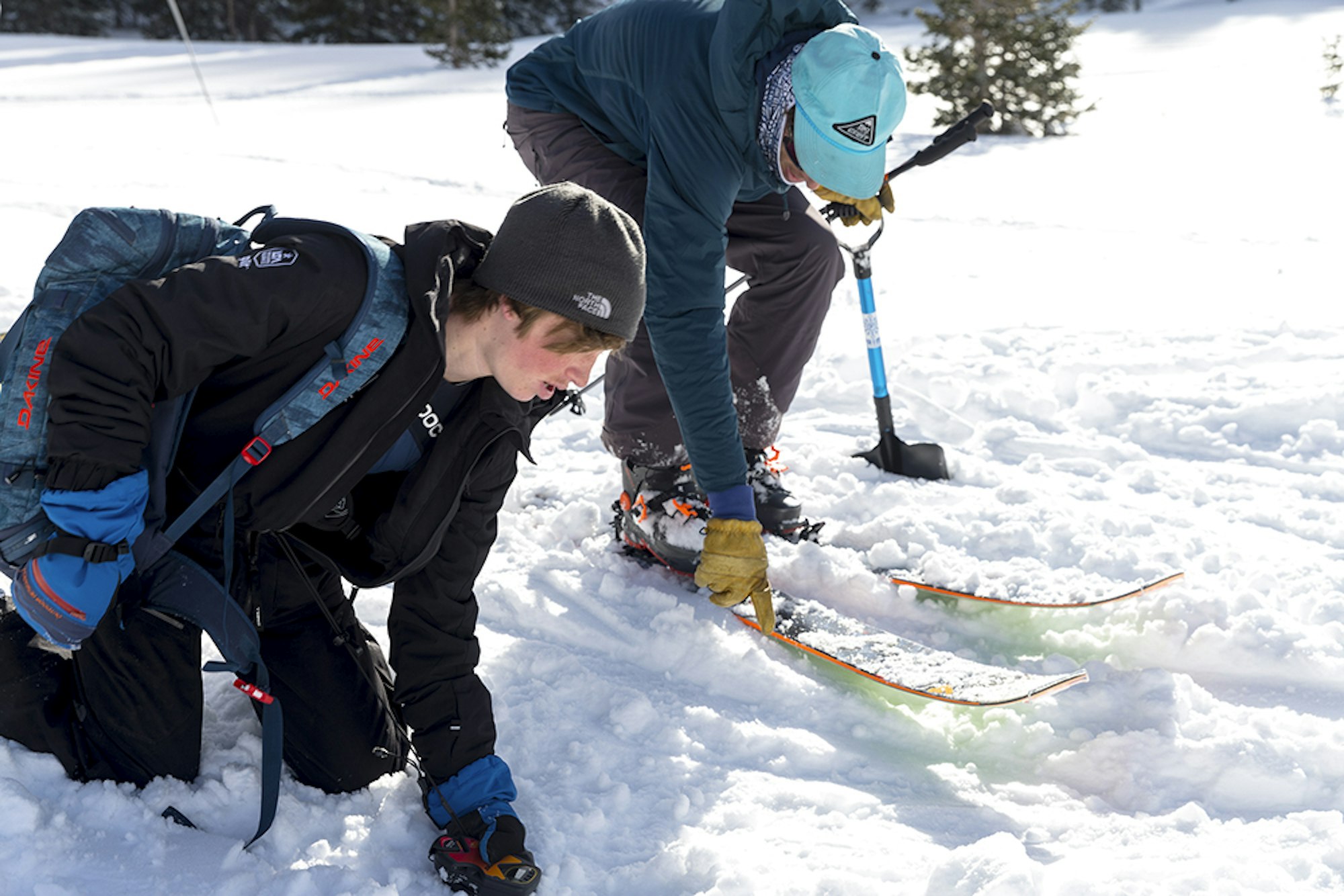
Erme Catino assisting a student with a beacon search.
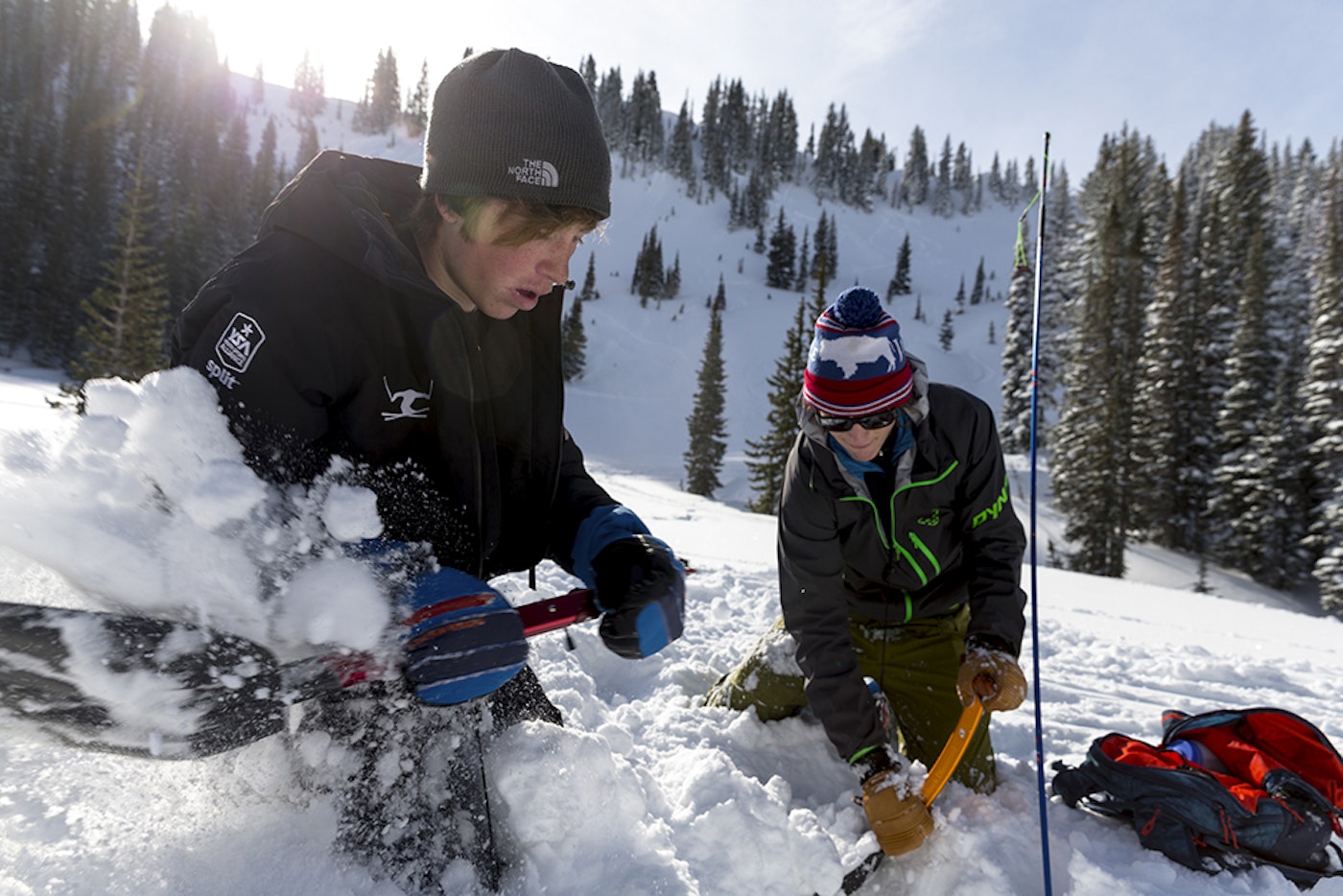
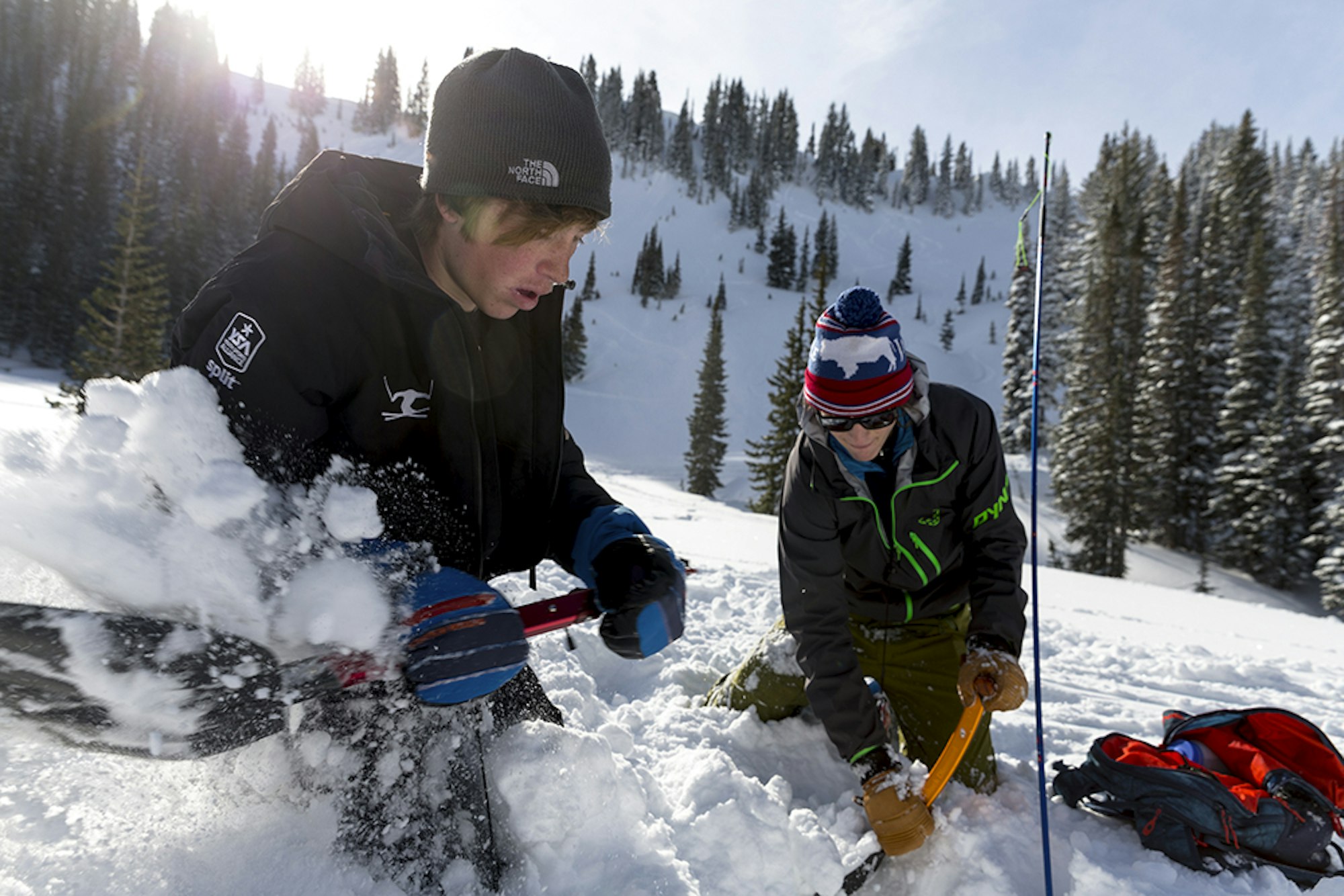
Students dig to find the buried beacon during a beacon drill.
Ben, a 15-year-old who skis on the Snowbird Freestyle Team kicks his leg up and rips his skin off on a single leg in seconds. I turn and look, impressed, as we stand off to the side of a cornice with Solitude’s rugged Fantasy Ridge to our North. I catch him pulling his skin off in the corner of my eye as I stuff my backpack and give him a little elbow. “Heck yeah, dude!” I say, acknowledging how much these kids were on it. We ski down, talking about rollovers and ideal places to watch our partners while negotiating terrain features before walking up towards Patsy Marley for another lap in blower shaded powder. It was the most skiing I’ve ever down in a 101 avalanche course, and I was struck by the kids’ ability to quickly learn and travel through the mountains.
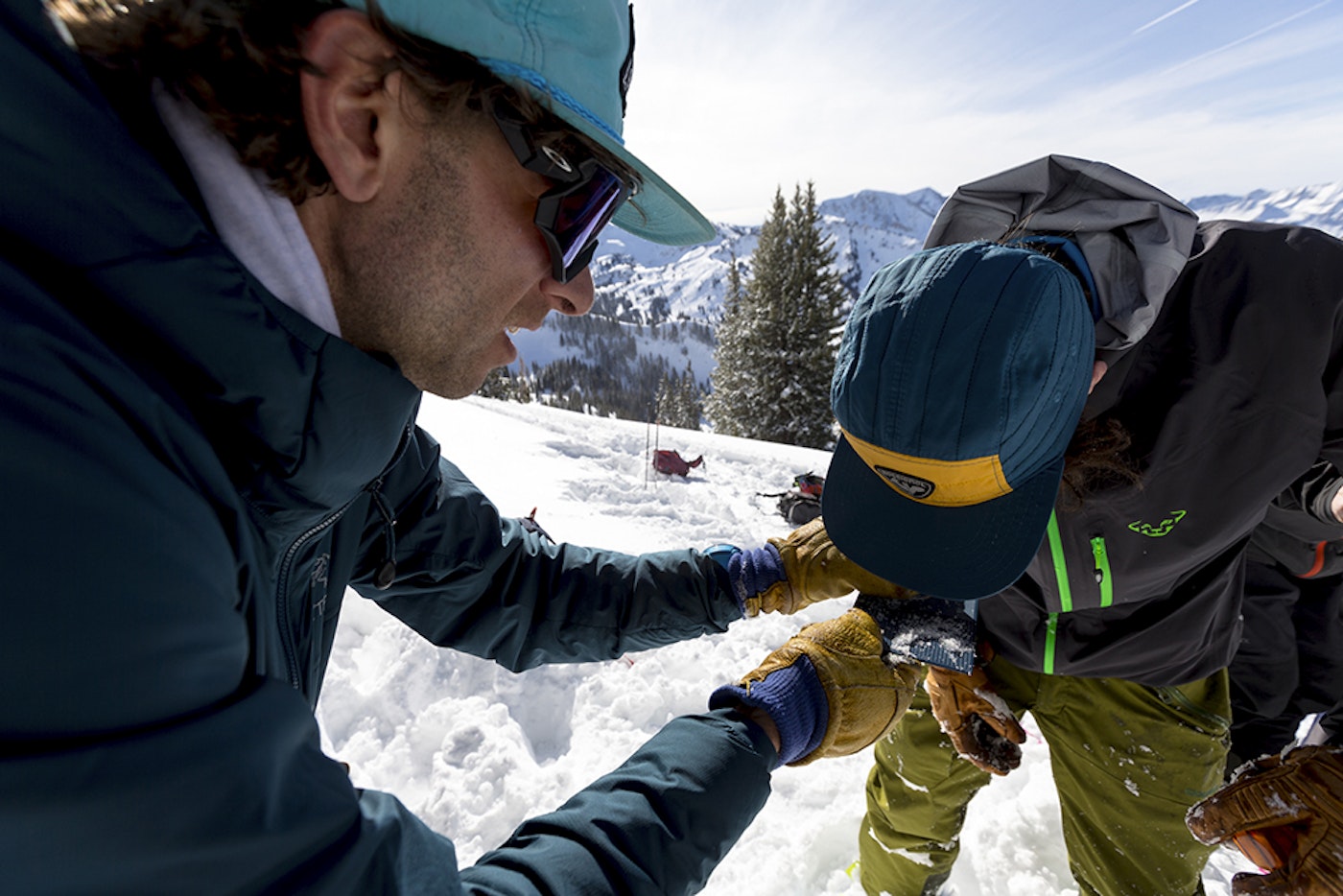
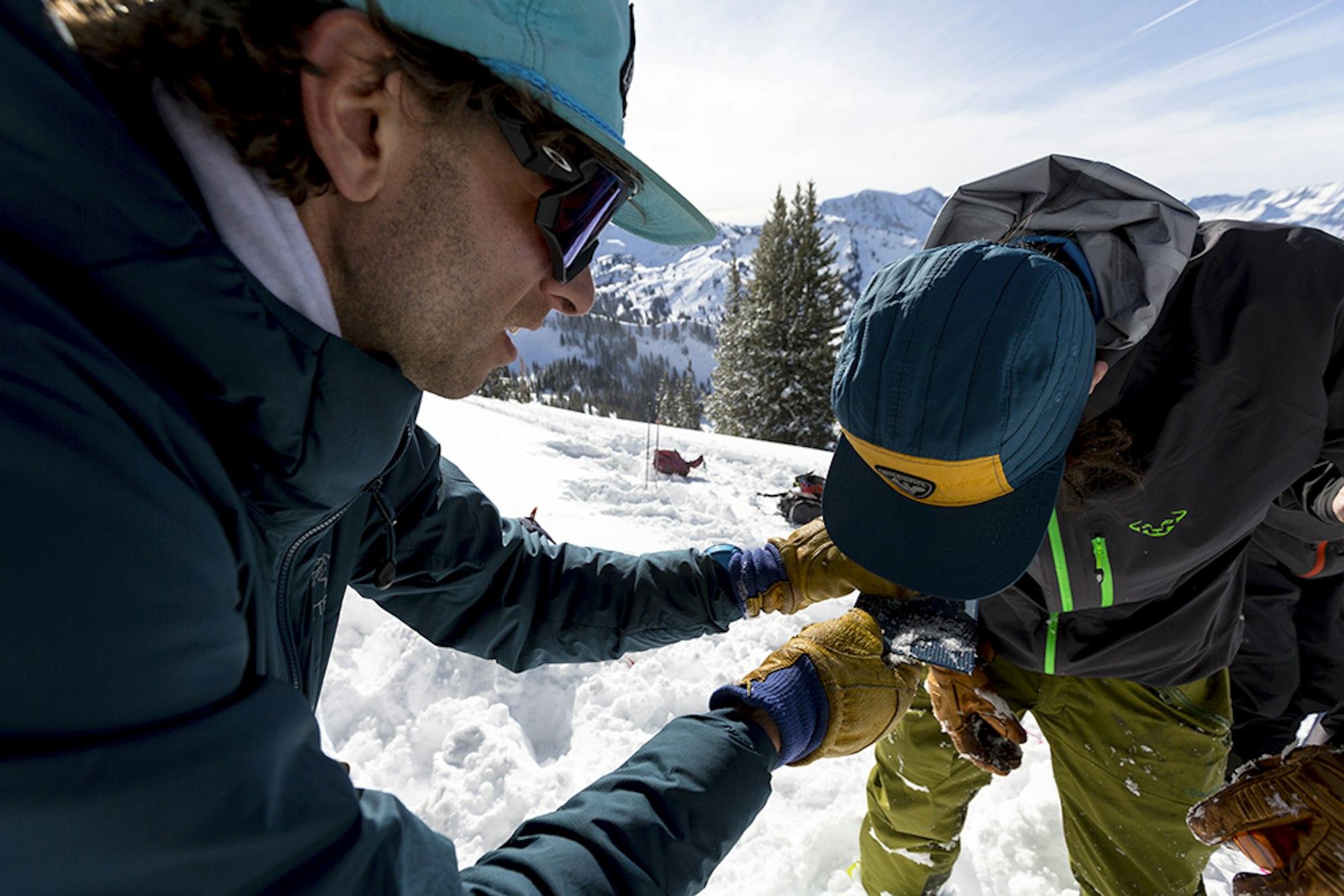
Erme Catino giving a student a closer look at snow crystals.
At the end of the day, Nassetta asks the kids what they learned. Their answers make all of us proud:
“Always observe conditions throughout the day; What you can do in the resort doesn’t mean anything in the backcountry; Communicate and verbalize what you see; Match your terrain with the avalanche forecast.”
These were just a few of the sound bites that resonated amongst the 18 students, all of which were eager to practice what they learned, start exploring the backcountry and get ready to take another course in the future.

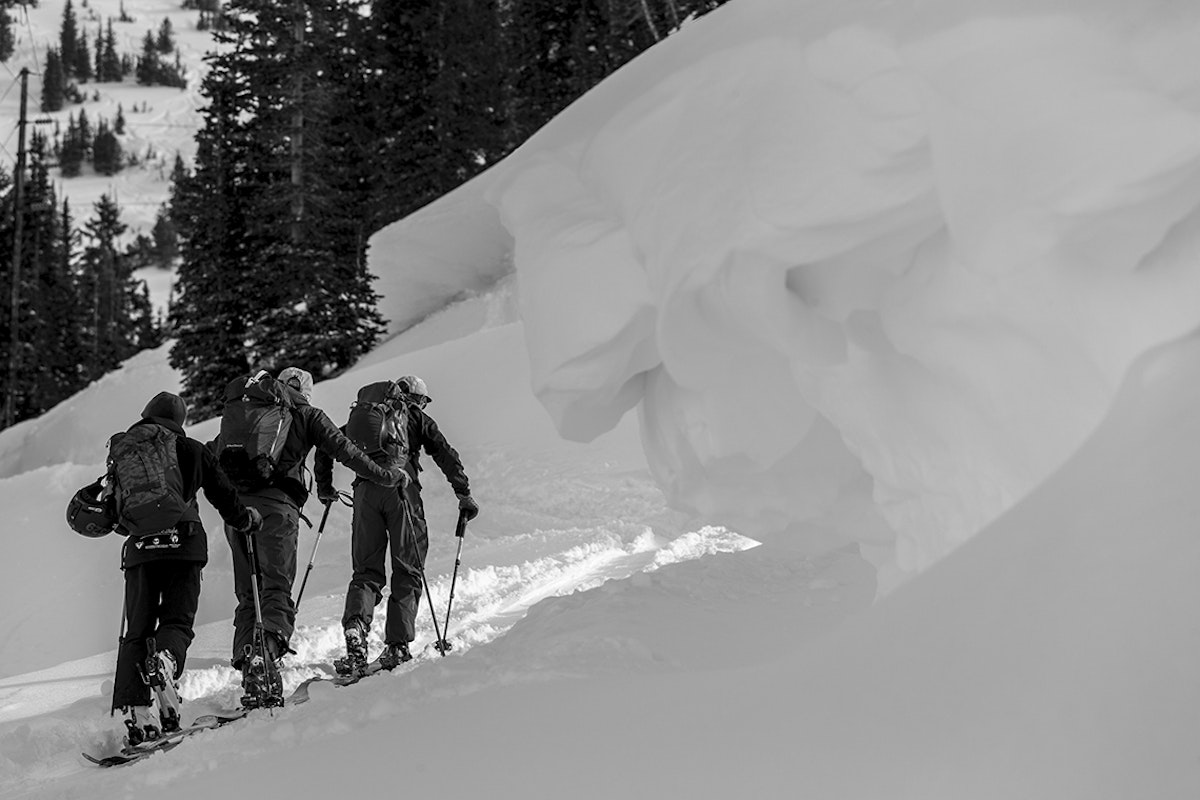

![[GIVEAWAY] Win a Head-to-Toe Ski Setup from IFSA](https://www.datocms-assets.com/163516/1765920344-ifsa.jpg?w=200&h=200&fit=crop)


![[GIVEAWAY] Win a Legendary Ski Trip with Icelantic's Road to the Rocks](https://www.datocms-assets.com/163516/1765233064-r2r26_freeskier_leaderboard1.jpg?auto=format&w=400&h=300&fit=crop&crop=faces,entropy)




![[GIVEAWAY] Win a Head-to-Toe Ski Setup from IFSA](https://www.datocms-assets.com/163516/1765920344-ifsa.jpg?auto=format&w=400&h=300&fit=crop&crop=faces,entropy)


